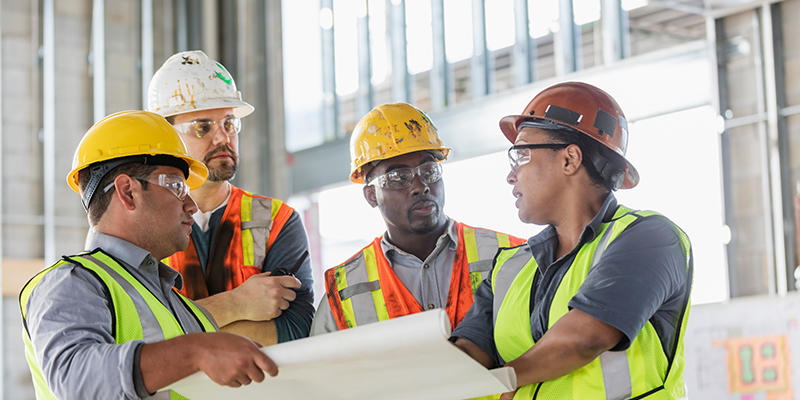Annual health care spending in the U.S. tops $3.6 annually, and some studies suggest that overall health is impacted more by the environment and lifestyle choices than genetic makeup. With the majority of us spending around 90% of our days indoors, our health is fundamentally shaped by where we work.
A panel at NAIOP’s I.CON Virtual 2020 tackled the issue from health, engineering and design, and tenant points of view. Heath Abramsohn with the Rockefeller Group led the panel, which also included Andres Rodriguez-Burns and Nate Maniktala with BranchPattern, and Shalini Ramesh, Ph.D, with the International WELL Building Institute.™ They took attendees on a deep dive into WELL building targets and how Rockefeller Group implemented them in an industrial project in Piscataway, New Jersey.
The International WELL Building Institute™ (IWBI) is leading the global movement to transform buildings and communities in ways that help people thrive, and its WELL Building Standard™ is the leading global rating system and the first to be focused exclusively on the ways that buildings, and everything in them, can improve comfort, drive better choices, and enhance health and wellness.
Currently IWBI has nine registered industrial projects and two certified industrial projects. The two certified projects were both developed by Prologis and are located in Tacoma, Washington, and Tilburg, Netherlands. The Rockefeller Group Logistics Center, a state-of-the-art, master-planned industrial park, is pursuing it now and, once certified, one of the park’s facilities would become the first industrial building in the world to achieve both LEED Platinum and WELL Gold certifications. This, the company says, could serve as a catalyst for broader adoption of WELL standards in industrial facilities.
A variety of WELL features were implemented throughout the project, largely driven by tenants’ social governance goals and efforts to create equitable environments between workforces in corporate headquarter office space and warehouse facilities. Office workers often enjoy comforts that are less frequently available in industrial facilities, like access to good acoustics and plenty of natural lighting.
The team at BranchPattern aimed to implement a variety of features to create a healthier, more desirable space both inside and outside the facility. For example, the entire industrial site was leveraged to be more pedestrian oriented, with on-site destinations like walking trails and landscaped retention ponds that connect the park with nature.
Air quality was addressed through rigorous standards that lowered particulate matter and formaldehyde levels, and idle-free zones were designated to cut down on combustion and improve air quality inside and outside. Acoustic standards were tougher to address, as defining what’s considered a reasonable level of noise is hard to do in an environment dependent on alarms that sound for safety. Improving drinking water quality and providing access to water through hydration stations placed throughout the facility were key.
One of BranchPattern’s foremost goals was addressing the mind and helping to tackle mental health through the built environment. They tried to break down barriers between the outside and inside, and lighting proved to be the most tangible representation of their efforts. The project was designed to be a luminous space and not an enclosed warehouse facility, with natural daylight incorporated through skylights, clear story windows and storefront windows. Furnishings in common areas mimic nature with earth tones and natural wood floors.
IWBI has released new efforts addressing the impact of the COVID-19 pandemic on the built environment, with a Prevention & Preparedness, Resilience & Recover plan that identifies and groups select WELL strategies around key themes, including:
- Promoting clean contact.
- Improving air quality.
- Maintaining water quality.
- Managing risk and create organizational resilience.
- Supporting movement and comfort, including working from home.
- Strengthening immune systems.
- Fostering mental resilience.
- Championing community resilience and recovery.
A task force of 500+ public health experts, virologists, government officials, academics, business leaders, architects, designers, building scientists and real estate professionals are informing a new WELL health-safety rating 2020, which launches shortly. The program is designed to help tenants and patrons feel more comfortable in returning to workspaces, entertainment facilities, hotels, retail centers and more.
This post is brought to you by JLL, the Social Media and Conference Blog sponsor of NAIOP’s I.CON Virtual 2020. Learn more about JLL at www.us.jll.com or www.jll.ca.















